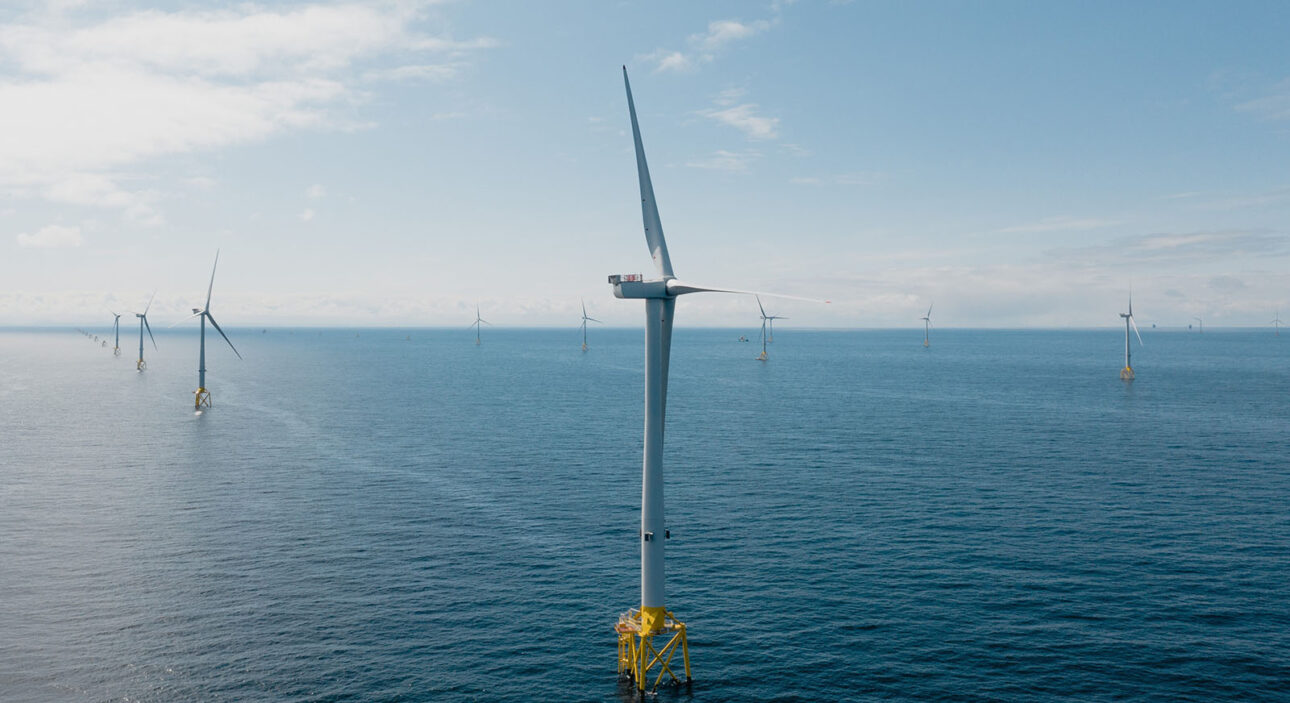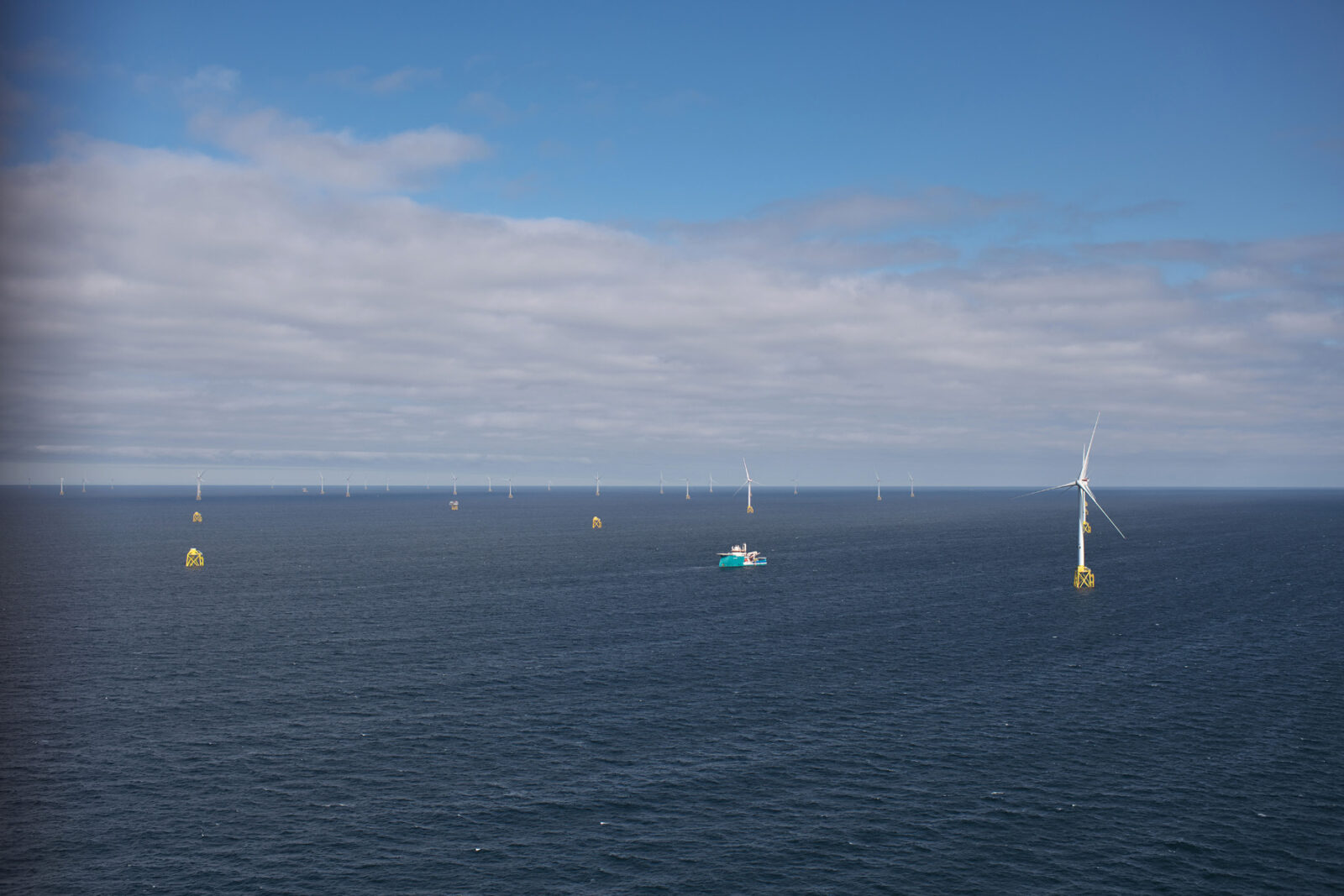For the last 12 years, Ocean Winds has been collating a vast amount of data on the Moray Firth and its native bird and marine mammal species – creating an invaluable catalogue of the region’s ecology to help us deliver offshore wind generation which is environmentally sound.
Balancing environmental impact with the societal need for low-cost, low-carbon energy is a must. With projected capacity of 2GW, Caledonia will double the Moray Firth’s energy production and if consent is granted, will power almost two million homes for up to 25 years.
This boasts substantial production potential which will help to drive net zero, however, carbon dioxide reduction is only one of many environmental impacts to consider. Data gathering remains vital to understanding and assessing these impacts and, where necessary, informing suitable mitigation measures. A robust approach to this will ensure the project is to the country’s environmental advantage.
Building a view of environmental impact
For Caledonia and similar projects, surveys are an important tool when it comes to data collection. These inform the development approach and model risks to minimise environmental impact on important native species such as seabirds and marine mammals.

For almost two years, environmental consultant APEM, has been carrying out digital aerial survey work at the proposed Caledonia site in the Moray Firth. This data will enable comprehensive baseline characterisation of the site and surrounding area to inform the project’s Environmental Impact Assessment (EIA) and Habitats Regulations Appraisal.
The process involves flying a survey plane over the site with a suitable buffer once a month taking digital photographs to identify which sea birds and mammals are present. Once the plane has completed its agreed route, the images are analysed, and the density of each species is calculated. This gives a snapshot of the species in that area.
Andrew Hamilton, Offshore Development Manager for Caledonia, shares more about the survey work and its importance. Having overseen all the ecological work to date he has a deep understanding of the Moray Firth and its ecosystems.
“For us, the impact on seabirds is one of our biggest consenting considerations, so we’ve gone over and above what is required of environmental impact surveys to gather an in-depth view of the area’s ecology – de-risking the project where possible. The more data we have, the more we can understand which species are present on the site and identify concerns at an early stage. This allows early consultation with key stakeholders on these risks which we see as key to achieving consent.”
Ocean Winds’ heritage extends back to 2010 and one of Scotland’s first commercial scale offshore wind projects in the Moray Firth – Moray East.
“We have previous experience in terms of site assessment and application of mitigation measures in the Moray Firth having conducted this for the neighbouring Moray East and Moray West sites,” adds Andrew. “Our experience in this area means we now have twelve years’ worth of data across a wide breadth of studies covering a significant area of the Moray Firth. This is invaluable as it offers a realistic view of the cumulative context across all three sites and will allow us to undertake a comprehensive assessment.”

Prioritising a proactive approach
Throughout these surveys, proactivity was essential to ensure a thorough understanding of the area’s ecology was built.
“We started survey work on the site in May 2021, ahead of the ScotWind award being announced in January 2022 and we will continue to survey until April 2023,” says Andrew.

“We also added extra time to our studies by focusing on additional months within the breeding season, which is the most sensitive period for seabirds. This additional survey was completed in collaboration with Moray East, which was undertaking post-construction monitoring work. This ensured we had a complete picture of the 2022 breeding season.”
This approach means a full report will be available in Summer 2023 which will form the basis of Caledonia’s EIA to Marine Scotland in 2024.
Building strong and trustworthy relationships
Most of the Caledonia project team have previously worked on Moray East and Moray West giving them significant insight into the local area and key stakeholders.
“Development of all three sites over the last twelve years has been vital in helping build relationships with stakeholders across the Moray Firth and beyond,” explains Andrew. “We’ve always listened to stakeholder and regulator concerns and acted to mitigate issues wherever possible.”
This can be seen in the strong and trustworthy relationships Ocean Winds has with statutory and non-statutory consenting stakeholders, and their willingness to engage and collaborate.
Ultimately, as with both Moray East and Moray West, a core aim of Caledonia is to front load the project with data collection and stakeholder engagement. This will ensure a high-quality consent and sustainable development which mitigates or compensates environmental impact.
This proactive approach to developing offshore wind at pace is what Ocean Winds does best.

